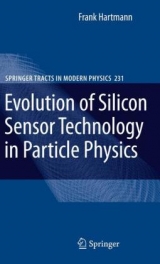Evolution of Silicon Sensor Technology in Particle Physics
Springer Berlin (Verlag)
978-3-540-25094-4 (ISBN)
- Titel erscheint in neuer Auflage
- Artikel merken
Frank Hartmann ist Gas-Wasser-Installateur und Heizungs- und Lüftungsbauer, Elektroinstallateur und Energietechniker. 2002 gründete er bei Würzburg das Forum Wohnenergie als Dienstleistungszentrum für energieeffizientes Bauen und Modernisierung. Darüber hinaus ist er sowohl im Projektmanagement als auch in der Weiterbildung, Qualifizierung und Beratung tätig.
Basic Principles of a Silicon Detector.- First Steps With Silicon Sensors: NA11 (Proof of Principle).- The DELPHI Microvertex Detector at LEP.- CDF; the World#x2019;s Largest Silicon Detector in the 20th Century; the First Silicon Detector at a Hadron Collider.- CMS; Increasing Size by two Orders of Magnitude.- Continuing the Story: Detectors for the SLHC and the ILC.- Conclusion and Outlook.
| Reihe/Serie | Springer Tracts in Modern Physics |
|---|---|
| Zusatzinfo | X, 204 p. 352 illus. |
| Verlagsort | Berlin |
| Sprache | englisch |
| Maße | 155 x 235 mm |
| Gewicht | 491 g |
| Themenwelt | Naturwissenschaften ► Physik / Astronomie ► Atom- / Kern- / Molekularphysik |
| Schlagworte | b-tagging • Collider • detector • Hadron • Hardcover, Softcover / Physik, Astronomie/Atomphysik, Kernphysik • HC/Physik, Astronomie/Atomphysik, Kernphysik • High Energy Physics • Linear collider • Particle physics • quality control • Sensortechnik • Silicon Detector • Silicone • Silicone / Silikone • Teilchenphysik • Tracking Detector |
| ISBN-10 | 3-540-25094-8 / 3540250948 |
| ISBN-13 | 978-3-540-25094-4 / 9783540250944 |
| Zustand | Neuware |
| Haben Sie eine Frage zum Produkt? |
aus dem Bereich




